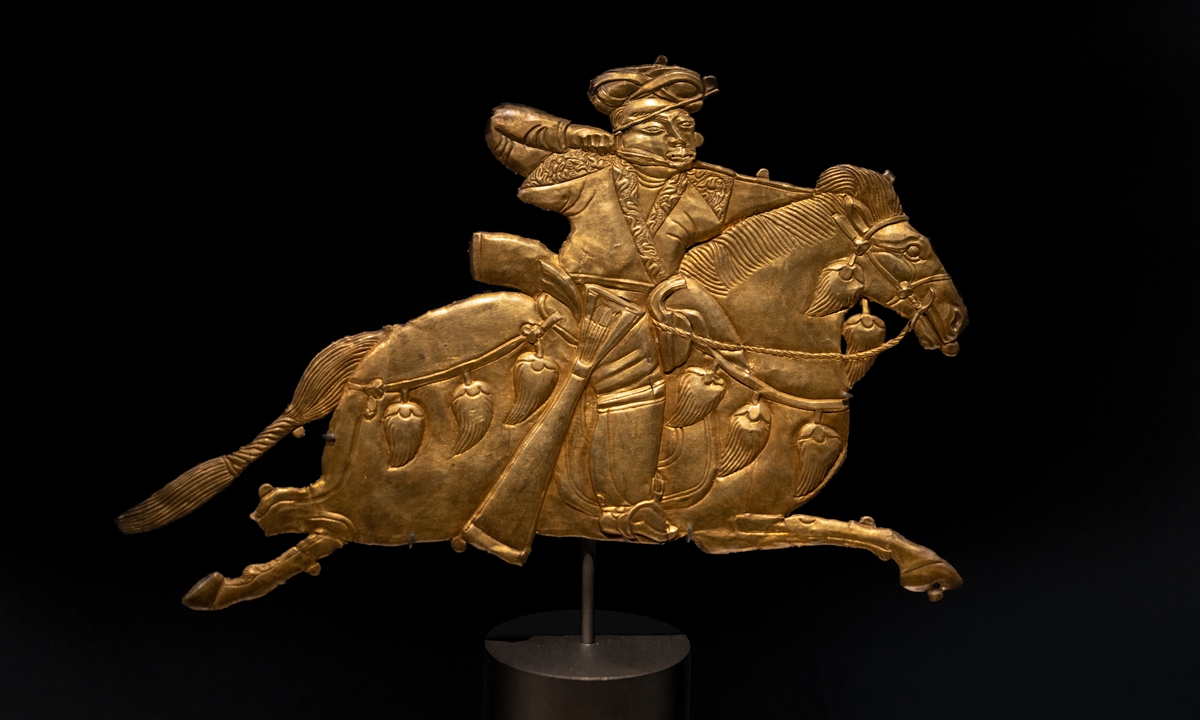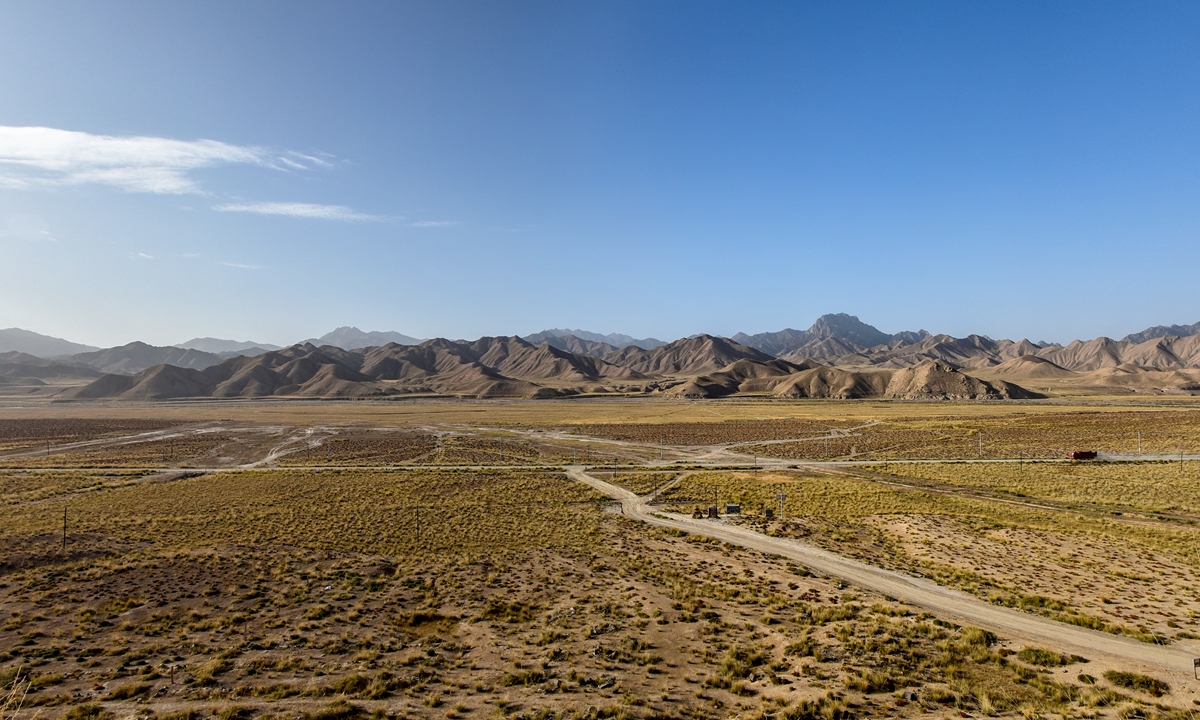
An ancient hairpin unearthed from the 2018 Xuewei No.1 Tomb Photo: IC
Located in Dulan county, Northwest China's Qinghai Province, the Wayan reservoir site is a representative archaeological spot containing historical evidence from the ancient Tubo Kingdom, the first regime to have a clear historical record in Southwest China's Xizang Autonomous Region.
According to a 2014 excavation report from the Shaanxi Academy of Archaeology and Qinghai Antique Archaeology Institute, eye-catching treasures such as "dragonfly eye beads" have been unearthed from the site, which is known for its 25 ancient tombs. However, it wasn't until recently that DNA research has revealed information about the tomb owners' origins.
Story hidden among genes A team led by Fudan University's Wen Shaoqing and Xiamen University's Wang Chuanchao told the Global Times that they had recently found the genome data of 10 ancient individuals dating from 1,202 to 1,380 years ago at the Wayan reservoir site.
Nine individuals were discovered to be closely linked to ancient highlanders from the southwestern Himalayas and carry features of the modern core-Tibetan population. Yet the 10th individual showed similar genetic signs as the ancient nomadic people of the Eurasian steppes.
The discovery disclosed the origin of the Wayan reservoir site's Tubo people, Wang noted.
According to DNA studies, the research group has also found an early connection between the Han and Tibetan people.
"The generic composition of the Dulan population is close to ancient farmers in the upper reaches of the Yellow River. From biological perspectives, our study proves that the Tubo group was related to modern Han and Tibetan people," Du Panxin, a researcher in the team, told the Global Times.
The Tubo Kingdom has a history that traces back to the 7th century. It was an ancient regime rooted in the Qinghai-Xizang Plateau. The Wayan reservoir site is located at the plateau's northeastern edge.
Du told the Global Times that their study sheds light on the demic immigration and expansion patterns of the Tubo Kingdom as it headed northeast.
Called an "empire," the territory on the plateau helmed by the Tubo reveals the unified sphere of ancient Xizang society. Under laws and policies inspired by its leader Songtsen Gampo, various small states and tribes were integrated to form this realm.
Prior to the new research, another genetic analysis had been completed in Nepal. It sampled ancient individuals' DNA from more than 3,300 years ago and also discovered a connection. Many scholars see this as proof that the Tubo Kingdom also expanded to the southwest of the plateau.
As they set foot in different places, the ancient Tubo also brought about cultural exchanges.
The Wayan reservoir site is a classic example showing how China embraced cultures from the west during the Tang Dynasty (618-907).
Wang told the Global Times that the site's cultural landscape was influenced by the Han culture of China's Central Plains and also the cultures of the ancient west region.
Nearly 900 relics, including pottery and bronze wares, leather goods and intricately designed amber pendants and gold earrings, have been found at the site's tombs.
Kai Yuan Tong Bao coins, a type of copper coin minted during the Tang Dynasty to regulate the currency market, have been unearthed at the site, showing that the social customs of the Central Plains were acknowledged by the ancient Tubo people.
Wang told the Global Times that the study is not only an exploration of demographic migration, but also a look into the "cultural codiffusion" of the Tubo Kingdom and the Tang Dynasty.

A gold decorative item unearthed from the Reshui Tombs Photo: VCG
Bigger picture The Wayan reservoir site is only the tip of the iceberg when it comes to Dulan county's ancient Tubo history.
More than 1,000 artifacts have been found in the 2018 Xuewei No.1 Tomb, part of the Reshui Tombs in Dulan county. The Xuewei No.1 Tomb, the most structurally intact tomb ever unearthed on the Qinghai-Xizang Plateau, was selected as one of the top 10 archaeological discoveries in China for 2020.
Tons of gold, silk and leather relics have been unearthed, among which a silver seal bearing the inscription "seal of the King Achai, the nephew" reveals the "Tubo" identity of the tomb owner.
Both the Wayan reservoir site and the 2018 Xuewei Tomb No.1 revealed the Dulan region was an important area for cultural interchange between China and the West along the ancient Silk Road.
Revealing the cultural history of the ancient Silk Road is the goal of many Chinese scholars today.
Wang told the Global Times that their project was done from the angle of DNA to study the blending of ethnic groups along the Silk Road powered by biological archaeology and DNA anthropology. This was inventive as most Silk Road studies mainly focus on the history of material and cultural exchanges.
By combining interdisciplinary subjects like archaeology, linguistics and genetics in one, the team's next project will focus on prehistoric human migration and the language transmission of the Dongtai, Miao, Yao and South Asian languages in South China and Southeast Asia.

The Reshui Tombs in Dulan county, Northwest China's Qinghai Province Photo: VCG